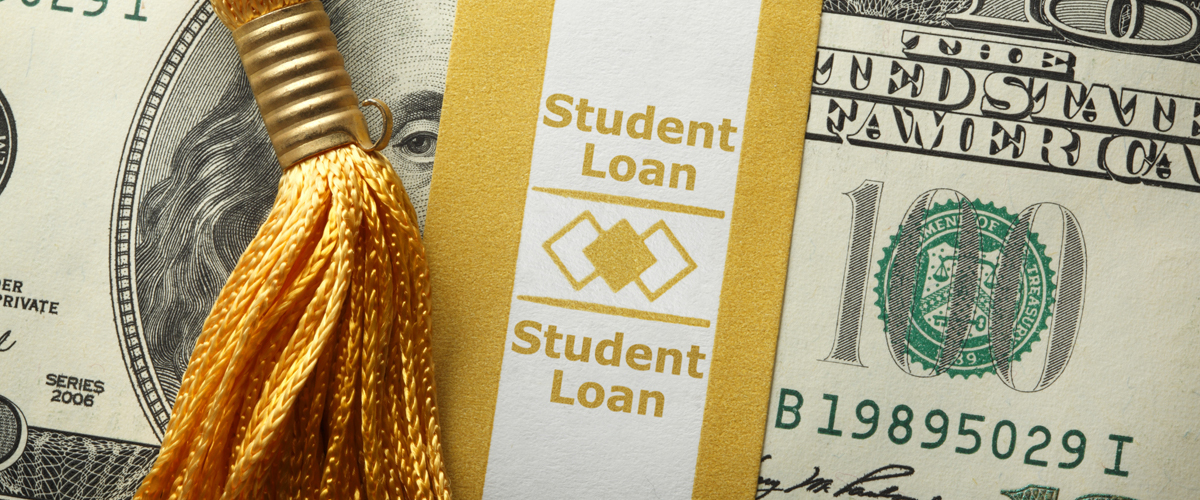Did you take out student loans to pay for your education? If you did, you were likely offered loans from the federal government that came with special perks.
Some loans, like federal subsidized loans, don’t start charging interest on your loan until after you after you graduate, drop below half-time enrollment, or leave school. Other perks of federal student loans include
- Multiple flexible repayment options. Some repayment plans are even based on your income.
- Fixed interest rates. Private loans have interest rates that change or are variable. Federal loans have the same interest rate for the life of the loan.
Additionally, all federal student loans come with a grace period: a six-month window after your graduate or leave school where you aren’t required to make payments toward your student loans.
For many, the grace period is a good time to get organized before student loan payments begin. It’s important to take advantage of this time and use it wisely.
Here are a few things to consider doing during your grace period to set yourself up for success.
Locate your loans and servicers
The first thing to do during your grace period is to contact your student loan servicer(s). A student loan servicer is the company that sends you the bills for your student loans when they become due, but that’s not all they do. They also help to guide you throughout repayment.
If you’re like many students, you may have multiple federal loans. These loans might be assigned to multiple servicers. But don’t worry—locating your student loans and servicers is simple. Just log in to Federal Student Aid’s website, or call the Federal Student Aid Information Center at 1-800-433-3243 to find out who your servicers are.
Once you’ve found out who your federal loan servicers are, it’s important to touch base with them. They’ll likely reach out to you first, but you can call or email them any time.
If you don’t hear from your servicer within a few months of graduating, leaving college, or dropping below half-time enrollment, go ahead and reach out to them. Sometimes, your servicer won’t have your updated contact information.
It’s your responsibility to make sure your federal student loan servicers have a way to contact you. Whether or not you and your servicer are in touch, your payments will eventually become due and interest will accrue.
When you get in touch with your servicer, find out how much time is left in your grace period (if you have one) and what repayment plans are available to you.
Choose your plan
When it comes to repaying your student loans, you have options. For federal loans, there are a number of different repayment plans. Remember: each repayment plan has unique benefits and disadvantages depending on your situation.
For example, if you choose a plan that allows you to pay your federal student loans over a longer period, you may have a lower required payment each month. But, you can end up paying more overall due to the interest that accrues on the loan over a longer period of time.
If you want to compare repayment plans and see what your monthly student loan payments could be, including any private loans you may have or plan to take out, head over to the Loan Simulator by Federal Student Aid. It’s a free tool that helps you see all your options at a glance and plan your repayment schedule.
Organize your money
After getting on the same page with your student loan servicer(s), picking a repayment plan, and figuring out how much your monthly payment might be, it’s time to budget.
When budgeting your money in college, you likely planned for textbooks and other school related costs. After graduation, you’ll carry those same budgeting principles over to new costs, such as your student loan payments.
Your grace period is a good time to start preparing for those payments. If you can afford to do it, practice “paying” your monthly student loan bills. Each month, put the amount of your monthly payment into savings and don’t spend it. This will help you to replicate what it will be like to pay that amount each month (and you can pay that additional money toward the loan principal to pay off the loan sooner).
Take advantage of your grace period
The grace period exists to give you breathing room after college to settle into your new routine, find a job, and prepare your finances for those monthly student loan payments.
Once you’ve adjusted to your post-college life, you can start making payments during your grace period if you like. It isn’t required, but it can help you get the jump on your student loan repayment plan.
During and after your grace period ends, your loan servicers will be available to help you. Need to switch repayment plans? Want to learn how you can lower your interest rates or the overall amount you pay? Just reach out to your servicers. They’re there to help!
 About Melanie
About Melanie
I am a Financial Coach for college students and parents. I am an Accredited Financial Counselor (AFC®) and received my BBA in Management from Texas State University. I help students understand their financial aid and help them develop a plan to achieve their educational and financial goals. I was a first-generation college student, so I have a personal understanding of some of the struggles students face.
Working in the financial aid industry for 13 years has given me the opportunity to work with students at different points in their life from starting college to graduating and finding a job — all the way through helping them repay their student loans and save for the future.
|
Read this to me
|









